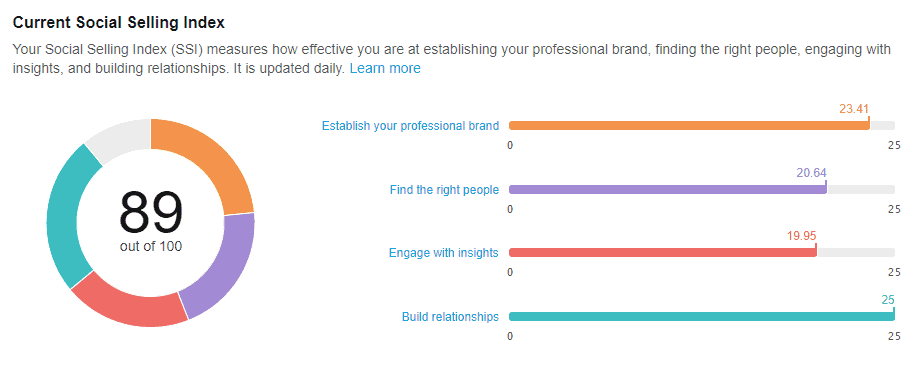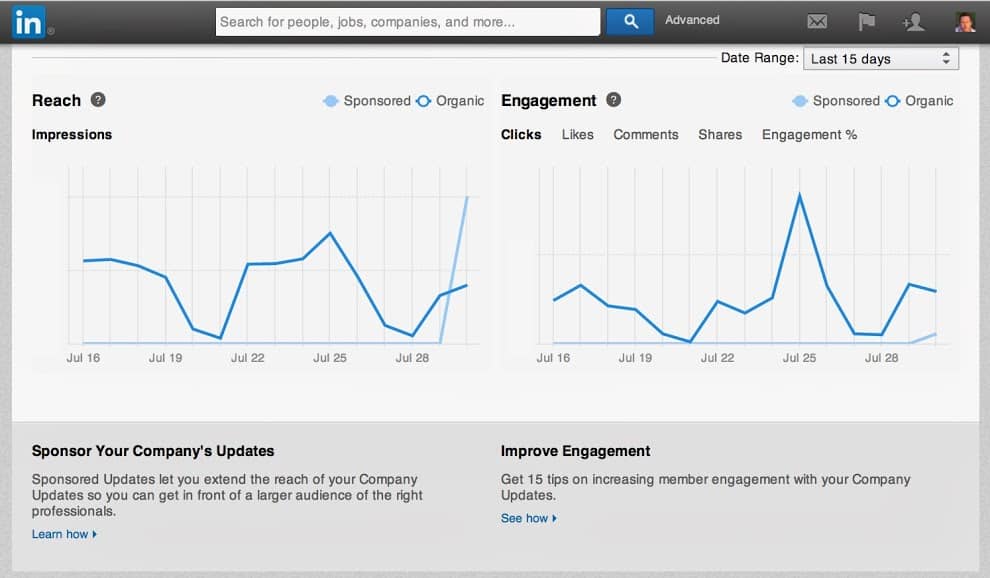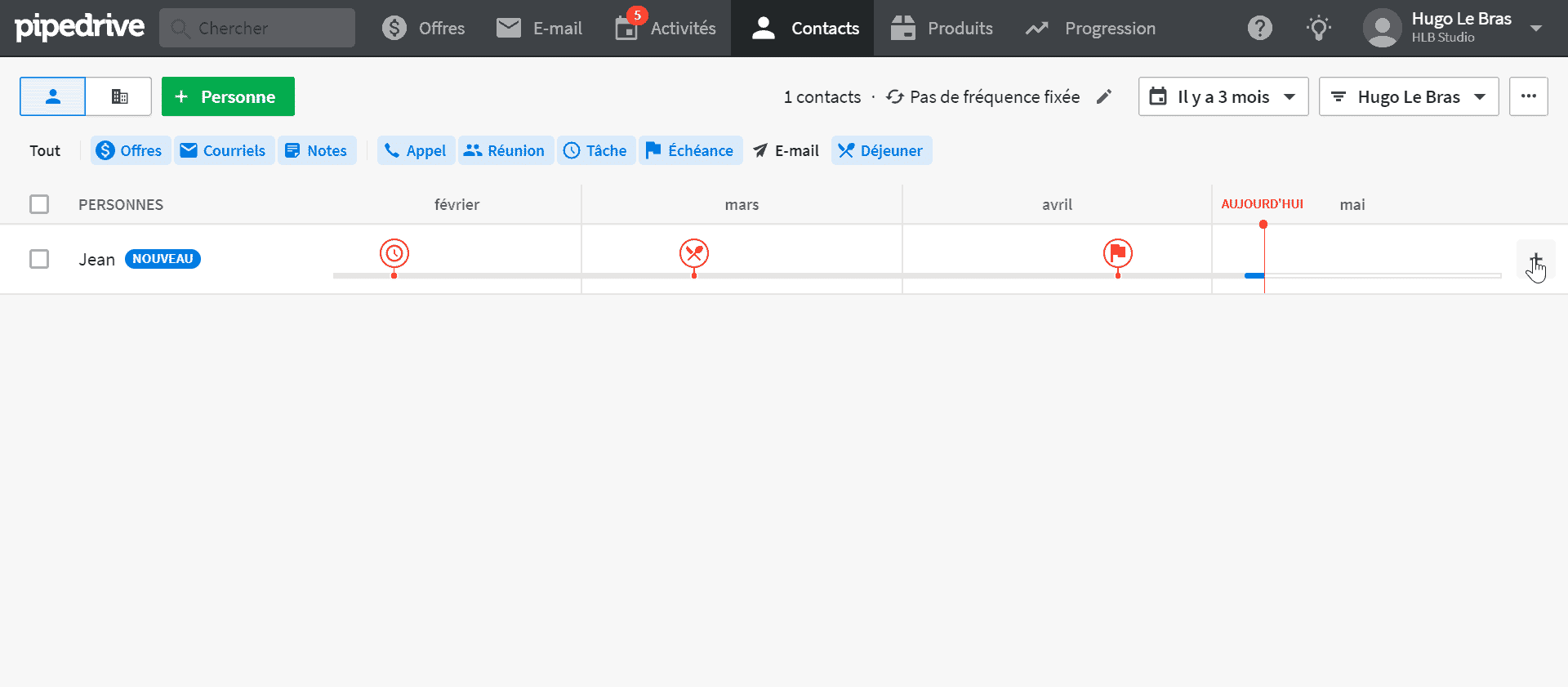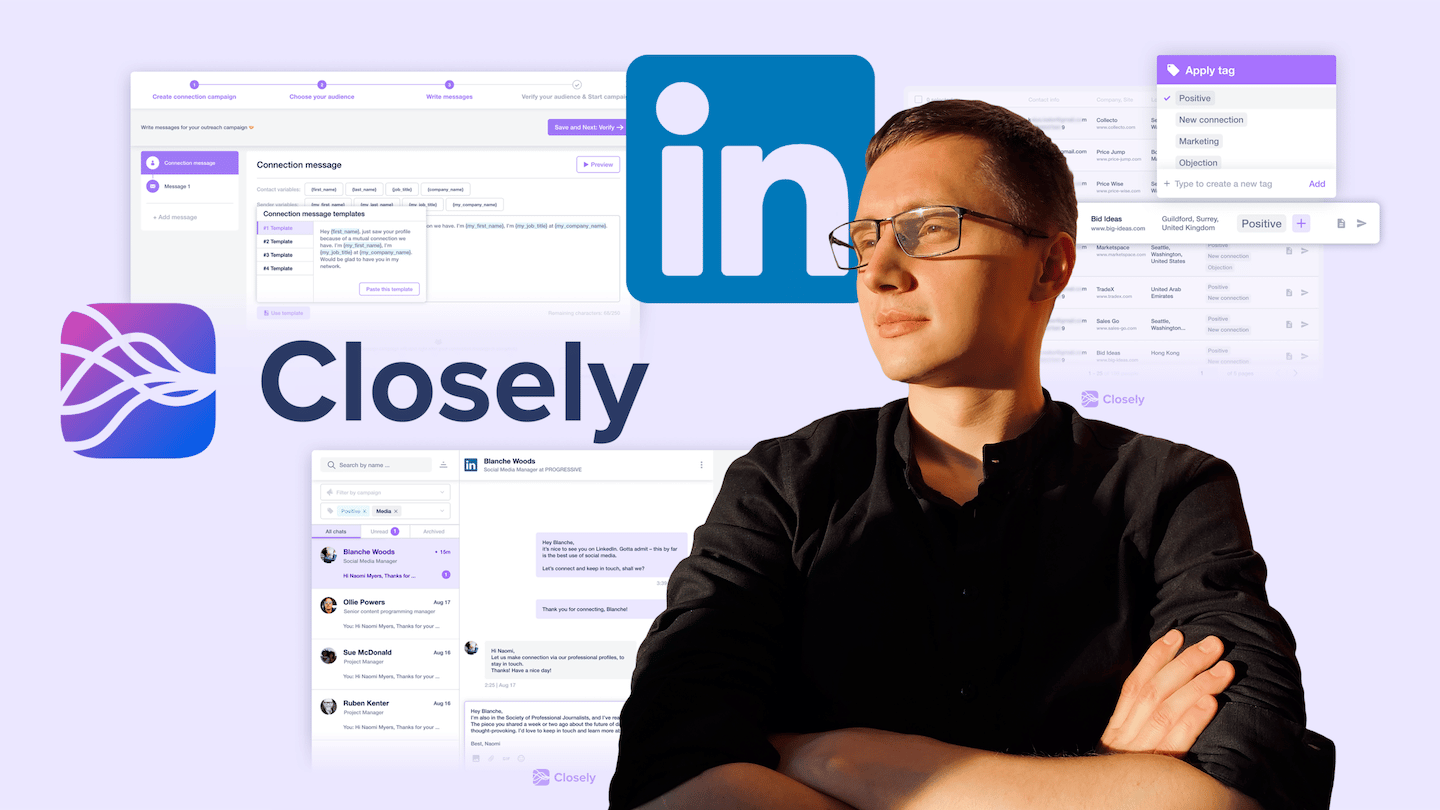In this article, we will present the most important statistics that social sellers can use to monitor their social selling initiatives and identify opportunities for improvement. Before we begin, we want to warn you: don’t lose the fun in your work! Measuring your progress and success is absolutely essential, but don’t obsess about it.
Sommaire
#1 Linkedin’s social selling index
When it comes to social selling, there aren’t many catch-all metrics that will give you an overall view of your success, with the possible exception of … Linkedin’s Social Selling Index (SSI). At the moment, this statistic is by far the fastest way to get an overview of your social selling efforts. The SSI metric measures your efforts on LinkedIn only. So it won’t help you evaluate your performance on Twitter, Facebook or other platforms. That said, if you can decipher the patterns on LinkedIn and see your SSI increase, it is unlikely that you will not be able to achieve the same on other platforms. The SSI looks at four key areas of any social selling campaign:
- Establish your professional brand on the platform.
- Find the right people and build your network.
- Engage with the right people and keep your subscribers engaged.
- Build relationships with decision-makers.
LinkedIn’s huge database helps them assign value to the actions you take on a daily basis on the platform. SSI has become one of the most popular social selling metrics in use today. It encourages engagement and helps social sellers focus on specific goals to improve their overall score. Even if it is not one of the essential tools for generating leads from Linkedin, it is still an index to watch carefully.

#2 Growing your network
The growth of your network is a simple measure that can give you a good overview of how your social selling efforts are helping you connect with your target audience. When you get new connections (friends, colleagues etc.) you create a larger network. More people know who you are. As a result, more people will interact with your messages and content and more people will participate in conversations with you. All social sellers need to track their network growth on individual platforms and across their entire social selling strategy. A larger network means more opportunities. To speed up your repetitive tasks, you can also use the best tools for social selling.
#3 Connection requests received
The speed at which your network grows is important. But going on LinkedIn and spamming connection requests to grow your network is an example of rapid growth that is unlikely to produce business results. Measuring the growth of your network can be a bit misleading. It depends on your strategic objectives. Inbound connections are often a more useful way to measure this growth.

Connections received are from anyone who sends you a connection request on LinkedIn, follows you on Twitter or adds you as a friend on Facebook (or follows your page). Inbound connections reflect the success of social selling more than the growth of the network itself. Inbound connections mean that prospects find you. They may find you via mutual connections, content you have shared on the platform or via referral systems on the social network of your choice.
#4 The rate of engagement on your content
When you share content, how many people like it, comment on it or share it with their own audience? Providing value through the sharing of high quality content is an essential aspect of social selling. You want to become a source of information for your audience. You want them to see you as an expert in your field. However, you should not simply share your own content. You need to share content from third-party sources to present your audience with a wide range of quality resources. Ultimately, your goal is to identify what is most important to your audience and share content around those topics. What are their most common questions? What do they need to know about your product, your company and your industry? What type of content will help them achieve their goals? Measuring the engagement rates of your content across platforms will let you know if you are doing a good job or not.
Salesdorado’s tip
Here is the definition of engagement rate:
Number of interactions (likes + comments + shares) / Number of views.
#5 The response rate to your messages
The speed with which people respond to the messages you send them can give you an indication of your ability to interact with new prospects. A low response rate to your messages may be a sign that you need to rework your approach style. Or, perhaps you should evaluate the amount of time you invest in getting to know a prospect well before contacting them by message. There are many ways to approach and adjust this particular metric. But, the message response rate is critical to determining whether you are doing a good job of “warming up” prospects before engaging with them. While some social selling strategies involve cold emails or messages, most begin with a question to start the conversation.
Salesdorado’s advice
To better measure the response rate, we encourage you to use a tool like Dux-Soup or Prospectin
#6 The engagement rate of your followers on your content
The engagement rate of your subscribers clearly indicates the effectiveness of your social selling strategies. What percentage of the people you connect with on a platform end up interacting with your content? This metric not only helps you identify whether or not you are connecting with the right people, but it also tells you how well you are positioning yourself as someone people like to engage with. When your followers interact with the content you share, you are (perhaps unknowingly) building relationships. This is the basis of all social selling initiatives – genuine relationships. The engagement rate of your followers is perhaps the most important measure on this list.
#7 Recommendations received
Building a reliable network is essential for social selling and your long-term business success. Once you have built a strong network, most social sellers choose to focus less on ongoing outreach. They choose to focus more on creating referrals, while letting their social networks grow organically through the content they share. This allows you to focus on overall tasks that position you for long-term success, with less day-to-day work.

More than 80% of consumers buy products on the recommendation of someone they know. In many ways, recommendations are a social seller’s greatest asset. Using the recommendations you receive can be indicative of your success in building relationships with prospects. It also helps to gain their trust. Simply put: people refer others to people they trust.
#8 Clicks on your links
Clicks on your links are an effective metric when reviewing your outreach strategies. It helps you assess how your prospects are connecting with your content during the relationship building phase. When you share a link to relevant and valuable content, you want your audience to click on it. Many won’t. Knowing the percentage of prospects who click on your links can tell you more about how they view you as a source of authority … or not.

Clicks on links show that your prospects are interested in the content you are sending them. A high click-through rate shows that your audience appreciates the value of the content you are sharing with them. They want to read what you have to say and what you have shared. Clicks on links indicate the strength of your relationships.
#9 The number of conversations started
While social selling is all about quality interactions, there is also something to be said for quantity. As long as you don’t experience a drop in quality, having more conversations going on inevitably leads to more opportunities. More relationships, more conversations, more enquiries and therefore more sales. Starting a number of new conversations each week can be a good way to ensure that you are always the focus. In the beginning, until you have enough presence to generate enough inbound leads, you will need to actively start new conversations to grow your network.
#10 Income generated
Even if it doesn’t really fit into the definition of social selling, your goal is to make money. If your social selling efforts don’t generate verifiable revenue, you probably won’t continue for long. Fortunately, social selling revenue is easy to track. Because you engage in real conversations with your prospects, you know exactly which customers have actually passed through your sales pipeline. You were there every step of the way.
Social selling needs to make sense from a revenue perspective, so that all other measures count. However, using a wide range of metrics to refine your strategies over time will help you increase the revenue generated. As you increase your presence, more referrals and inbound leads will enter your pipeline. This will automatically lead to increased revenue and business growth.







